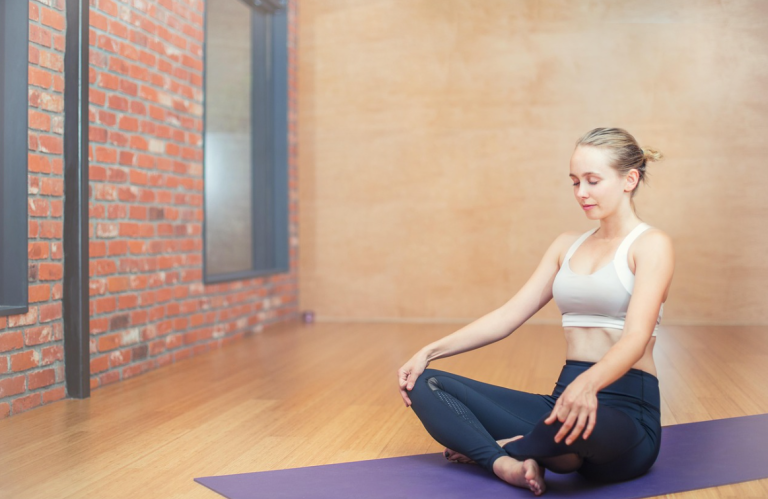
Introduction
In today’s fast-paced world, where everyone seems to be constantly on the go, finding moments of peace and clarity can feel like an impossible task. But what if the answer to reducing stress, improving focus, and boosting overall well-being could be something as simple as paying attention to the present moment? That’s where mindfulness comes in. This ancient practice, rooted in Buddhist traditions, has gained immense popularity in recent years due to its profound effects on mental and physical health.
But how can we seamlessly integrate mindfulness into our busy routines? In this article, we’ll explore how you can introduce mindfulness into your daily life, with practical steps and insights that anyone can apply.
What is Mindfulness?
Mindfulness is the practice of being fully present in the moment, with an open and non-judgmental attitude. It involves paying attention to your thoughts, feelings, bodily sensations, and the environment around you, without getting overwhelmed by them. The essence of mindfulness is not to block out distractions but to observe them with awareness and acceptance. This practice allows individuals to step away from the chaos of daily life and become more attuned to themselves and their surroundings.
The Benefits of Practicing Mindfulness
Mindfulness has far-reaching benefits that can positively impact your mental, emotional, and physical health. Let’s break it down:
- Mental Health: Mindfulness helps reduce anxiety, depression, and stress. By focusing on the present, individuals can detach from overthinking and the cycle of negative thoughts.
- Emotional Health: Mindfulness increases emotional regulation. People who practice mindfulness are better equipped to handle their emotions, making it easier to respond thoughtfully rather than react impulsively.
- Physical Health: Research shows that mindfulness can lower blood pressure, improve sleep, and even strengthen the immune system.
- Improved Focus: By practicing mindfulness, you enhance your ability to concentrate and make better decisions, as it trains your brain to stay in the moment.
Why Should You Integrate Mindfulness Into Your Routine?
So why exactly should you make an effort to integrate mindfulness into your routine? The short answer: it can significantly improve your quality of life. When you practice mindfulness, you gain control over your thoughts and reactions, reducing stress and enhancing well-being.
Impact on Mental Health
The modern world presents a slew of mental health challenges. Whether it’s work stress, relationship issues, or social media overwhelm, people today are often consumed by negative thoughts. Mindfulness helps break this cycle. By simply being aware of your thoughts and emotions without judgment, you create space to manage them more effectively. This practice is linked to reductions in anxiety and depression, and it allows for a greater sense of inner peace.
Impact on Physical Health
Mindfulness isn’t just about mental clarity—it can also improve your physical health. Studies have shown that regular mindfulness practice can lower blood pressure, improve sleep quality, and even boost the immune system. By reducing stress, which can manifest physically in the body, mindfulness encourages relaxation and balance.
Key Principles of Mindfulness
To effectively integrate mindfulness into your routine, it’s essential to understand its core principles.
Awareness
At the heart of mindfulness is awareness. This means being present and consciously aware of what’s happening in the moment. Rather than letting your mind wander to past regrets or future worries, mindfulness encourages you to experience the now.
Non-judgment
Another key principle of mindfulness is non-judgment. Mindfulness teaches you to observe your thoughts, feelings, and sensations without labeling them as good or bad. You allow them to exist without any criticism or resistance, which reduces emotional turmoil and promotes acceptance.
How to Start Practicing Mindfulness
If you’re new to mindfulness, the idea of incorporating it into your daily routine might seem overwhelming. But, just like any new habit, it becomes easier with consistent practice. Here’s how to start:
Start with Your Breath
One of the simplest ways to begin practicing mindfulness is by focusing on your breath. Find a quiet space, close your eyes, and take deep, deliberate breaths. Pay attention to the sensations of air entering and leaving your body. This simple act anchors you to the present moment and can be done anywhere, at any time.
Create a Routine
Mindfulness is most effective when it becomes a regular part of your life. Start small. Perhaps you set aside 5-10 minutes in the morning for meditation, or take a mindful walk during lunch. The key is consistency. Once it becomes part of your routine, it will be easier to maintain.

Use Reminders and Cues
Sometimes, it’s easy to forget to practice mindfulness amidst the hustle and bustle of everyday life. That’s why using reminders or cues can be incredibly helpful. This could be setting a reminder on your phone, placing sticky notes around your house, or associating certain actions (like washing your hands) with a mindful moment.
Examples of Mindfulness Cues
- A sticky note that says “Breathe” on your desk.
- A phone alert that reminds you to practice gratitude.
- Focusing on your senses while you drink your morning coffee.
Mindful Activities to Include in Your Day
You don’t have to set aside hours for mindfulness practice. You can integrate it into many of your daily activities.
Morning Meditation
Starting your day with a few minutes of meditation can set the tone for a mindful day. Find a quiet space, sit comfortably, and focus on your breath or repeat a calming mantra. This helps to center your mind and reduce stress right from the start.
Mindful Eating
Mindful eating is a great way to stay present during meals. Rather than rushing through your food, take time to truly savor each bite. Pay attention to the taste, texture, and aroma of your food, and notice how it makes you feel.
Mindful Walking
Walking is another excellent opportunity for mindfulness. Instead of rushing through your steps, take slow, deliberate strides, focusing on the sensations in your feet, the rhythm of your breath, and your surroundings. Walking mindfully transforms a mundane activity into a peaceful experience.
Body Scan Meditation
Body scan meditation involves mentally scanning your body from head to toe, paying attention to any areas of tension or discomfort. This practice helps you reconnect with your body and promotes relaxation.
Overcoming Challenges in Mindfulness Practice
It’s normal to encounter challenges when starting something new. Here’s how to tackle some common obstacles:
Dealing with Distracting Thoughts
It’s common for the mind to wander during mindfulness practice. When this happens, simply notice the thought without judgment and gently return your focus to your breath or whatever you’re doing. The key is not to be hard on yourself.
Consistency is Key
Mindfulness is a habit that takes time to develop. If you miss a day, don’t be discouraged. Just keep going, and eventually, it will become a natural part of your routine.
Conclusion
Integrating mindfulness into your daily routine is one of the most powerful ways to enhance your well-being. By taking small steps, such as focusing on your breath, incorporating mindful activities, and practicing regularly, you can enjoy the many mental, emotional, and physical benefits that come with this simple yet profound practice. Remember, mindfulness isn’t about perfection—it’s about being present. The more you practice, the more natural it will become.

FAQs
- How long does it take to see the benefits of mindfulness?
The benefits of mindfulness can be felt as soon as you begin practicing, but for long-term improvements, consistency over weeks or months is key. - Can mindfulness help with anxiety and stress?
Yes, mindfulness is proven to reduce stress and anxiety by helping you stay grounded in the present moment and detach from negative thought patterns. - What if I don’t have time for a formal meditation session?
You can practice mindfulness in small increments throughout the day, like while walking, eating, or even washing dishes. - Is mindfulness the same as meditation?
While mindfulness and meditation are related, mindfulness refers to being present in the moment, and meditation is one of the ways to cultivate mindfulness. - Can mindfulness improve sleep quality?
Yes, practicing mindfulness before bed can help calm the mind and improve sleep quality by reducing the overthinking that often disrupts rest.





